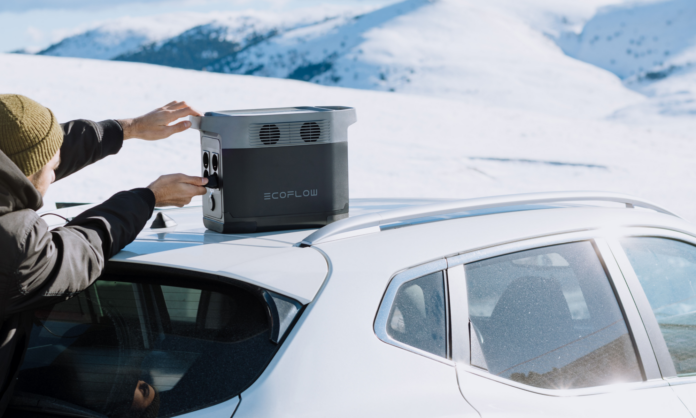Table of Contents
Starlink offers high-speed satellite internet across the globe, but how does it hold up in extreme weather? While it’s designed to withstand harsh conditions, factors like heavy rain, snow, and thunderstorms can sometimes impact performance. Understanding how different weather conditions affect your connection can help you stay prepared, whether you’re in a winter storm or a power outage. This article explores how your system performs in various weather conditions and what you can do to maintain a reliable connection.
Does Starlink Work in Heavy Rain?
Starlink is designed to handle various weather conditions, so heavy rain will usually not affect your signal. However, during rare, severe storms with thick clouds and heavy rain, there could be some signal degradation due to the moisture in the atmosphere attenuating the radio signals. Rarely, even in heavy rain, will there be a loss of connectivity. If you experience either of those, it should return to normal as soon as the worst of the storm passes.
Does Starlink Work in Snow?
Thanks to its built-in snowmelt feature, which automatically heats the dish to melt the snow, it will continue to work perfectly during normal snowfall. However, if you experience a particularly heavy snowstorm, it could build up faster than it melts, interrupting your signal. This may require you to clear the dish by hand. In rare instances, heavy snow and thick clouds in the atmosphere could also cause attenuation of the radio signal, which could degrade your signal. However, everything should return to normal as soon as the worst of the storm passes.
Does Starlink Work in a Thunderstorm?
Starlink’s network can route traffic around storm systems to reduce the impact of severe storms, including thunderstorms. The dishes have lightning protection, so lightning shouldn’t affect them either.
However, especially severe storms with thick clouds and heavy rain can attenuate the radio signals traveling through the atmosphere. This could degrade your signal or, in rare circumstances, cause a temporary disconnection. Such severe storms are uncommon and brief, so your signal should return to normal when the worst of it passes.
The more serious threat of thunderstorms is a power outage. To protect your system, use a surge protector to protect against surges. The other thing you can do is to have a battery backup system in place.
Since routers require low wattage to run, you can use any size EcoFlow Portable Power Stations to run your equipment so you can stay connected during outages. If you want something robust enough to run additional appliances, the EcoFlow DELTA 3 Plus offers 1800W output to run your essential appliances during an outage.
Does Starlink Work in a Hurricane?
Yes, it will even work during hurricanes. However, hurricanes can damage the dish, so during the hurricane, it’s best to store your system inside and protect the exposed ends from water. If the cables get wet, allow them to dry completely before reconnecting them.
Free service is also available in hurricane-affected areas, including a direct-to-cell service to connect phones, free internet to keep you informed with real-time updates on storm events, surveillance footage, emergency shelter and responder updates, and more. To access this service, visit their website, choose residential, and add your address to select their Hurricane Relief Service Plan. It’s a temporary service, and you must already own or purchase their equipment to use it.
Does Starlink Work in Cloudy Weather?
Yes, it will still work on cloudy days. The only exception is severe storm events with heavy clouds and lots of rain, snow, or hail that can attenuate the radio signals as they travel through the atmosphere. This can lead to signal degradation and, in rare cases, brief interruptions. To protect yourself from storms, use a surge protector and have a battery backup system in place in case you lose electricity.
Does Starlink Work Without Electricity?
No, it does not work without electricity since the dish and router require a steady power supply. However, you can use a portable power station for Wi-Fi during a power outage or even in off-grid locations.
For instance, if you’re looking for a dedicated power supply just to run your Starlink, the EcoFlow RIVER 3 Portable Power Station will work perfectly, keeping you connected when the power goes out.
Alternatively, if you’re looking for a whole-home generator solution, you first need to understand how much energy the average household uses. Then, learn how to calculate kWh usage to determine what you need to run your house. This will help you decide what size of solar generator you need.
What size you need also depends on how you want to use it. If you want something to run your whole home or go off-grid completely, the EcoFlow DELTA 3 Pro starts at 4000W output and has expandable batteries up to 48kW, which is more than enough for almost any home to go off-grid.
Frequently Asked Questions
Starlink can operate outdoors in temperatures ranging from -22°F to +122°F. However, the signal’s performance may be degraded during extreme temperatures, and above or below those temperatures, it may be disconnected until temperatures are less extreme.
There’s no need to protect Starlink from rain since it is designed to handle all kinds of weather. Service will only be degraded or rarely disconnected in the most severe storms with very heavy rain. However, this is temporary, and regular service will return when the storm passes.
Final Thoughts
Understanding how the weather affects Starlink and taking precautions can ensure a stable internet connection, no matter the forecast. Fortunately, it is built to function in most weather conditions, including rain, snow, and storms, with only occasional signal degradation or temporary disconnection during severe storm events. However, it won’t work if you lose power. Still, a reliable backup system, like the EcoFlow DELTA 3 Pro, can keep you connected even during outages.
